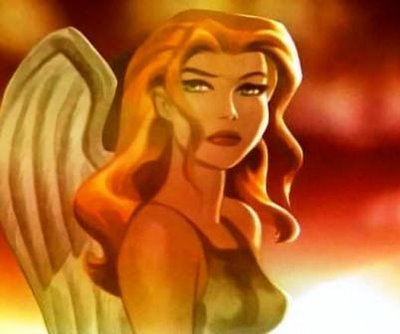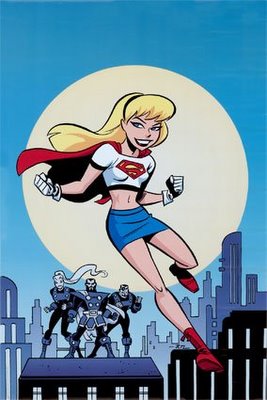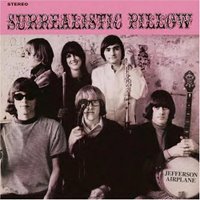 [Cross-posted to Rebels of Mars]
[Cross-posted to Rebels of Mars] I first heard about Joseph P. McDonald’s lost movie “masterpiece” Destination: Mars! during my student years at Cal State Northridge in the1970s. Ace Badinage, the founder of our campus libertarian group, dallied in science fiction as much as politics, like most of us did, and got the idea to sponsor a freedom-oriented sci-fi film festival. He felt Destination: Mars! just had to be included. After all, McDonald's 1950s movie was something nobody had seen, since it was seized before release by the U.S. government for its possible Communist themes. So among sci-fi fans, and particularly libertarian fans (frefen), it was something of a longtime cause celebre. Ace believed that a promised screening of Destination: Mars! would draw oodles of free publicity and consequently a big crowd to our film fest. And it would certainly put our college libertarian club on the map.
Unfortunately, we were unable to track down a copy of Destination: Mars! Every sci-fi buff in the L.A. area had heard of it, but nobody seemed to have ever seen it. I’ll never forget the evening I finally got Forrest J. Ackerman on the phone and asked how we might snag a print of Destination: Mars! I thought at the time that everybody in the San Fernando Valley could probably hear Forry roar with laughter over my phone.
“You’re outta your nut, Conger,” he told me. “Even I’ve never seen McDonald’s movie. And it’s likely nobody ever will. The feds probably destroyed the goddamn master print in the late ’50s.”
But here it is, three decades later, and Destination: Mars! has been found, restored, and released on DVD by Dark Horse Indie Films through Image Entertainment. Was it worth the wait? Not at all.
I guess the film’s notoriety had me imagining that Joseph McDonald was a genius, so harassed by the government that he never made another movie after Destination: Mars! I guess I expected that maybe, since the movie had been seized, there was something truly dangerous about its content. There’s nothing dangerous about this cheesy rip-off of The Day the Earth Stood Still. The acting is cringingly bad, worse even than that found in most ’50s sci-fi flicks. And the less said about the special effects, the better. I doubt that George Pal lost any sleep over this movie.
Worst of all, this DVD is being advertised as a restoration of the movie. To the contrary, Destination: Mars! looks horrible. It shows every bit of its 50-plus years. Every speck of dust on the grainy black-and-white film is the size of an asteroid, and the poorly repaired film breaks give the movie a jumpy quality that’s very annoying.
OK, I gotta stop this now. The last six paragraphs are bullshit. I’ve been playing along with the mythology created just a few years ago by filmmaker-brothers Richard and Tor Lowry and their friend Chris Patton when they produced Destination: Mars!, a hilarious send-up of sci-fi B-movies. This film, which cost a whopping $6,000 to make (really!), is filled with every genre cliché in the book. And it’s smart as hell. The DVD even opens with a “mockumentary” about the movie and its “creator” Joseph McDonald, complete with interviews with surviving members of the crew and old footage from HUAC hearings. Brilliant!

Here’s the best part: Destination: Mars!, terrific as it is, has been released in a DVD package as a second feature. The first feature is a more recent film by the Lowrys called Monarch of the Moon, a bigger-budget (though not by much) six-chapter 1940s-style movie serial about a WWII superhero called Yellow Jacket, who flies with the aid of a gas-powered jetpack and who can communicate with — you guessed it — bees. If you love the old Saturday afternoon movie serials, you’ll adore Monarch. If you enjoyed Sky Captain and the World of Tomorrow a couple of years back, you’ll discover that as good as it was, Monarch of the Moon beats it at every turn.
The two-disc DVD is filled with great stuff. You get commentaries from the filmmakers on both movies. You get behind-the-scenes material. You get two versions of Monarch, both in black-and-white and an amazing, oversaturated color. Heck, you even get a Dark Horse Yellow Jacket comic book.
This DVD package gets my highest rating. It’s absolutely boffo.
 A year or so back, a Starbucks acquaintance told me that George Orwell’s 1984 was “failed prophecy.” To his way of thinking, the year 1984 had passed two decades ago, “and none of that stuff has happened yet.” Oh, puh-leeze!
A year or so back, a Starbucks acquaintance told me that George Orwell’s 1984 was “failed prophecy.” To his way of thinking, the year 1984 had passed two decades ago, “and none of that stuff has happened yet.” Oh, puh-leeze! 





























